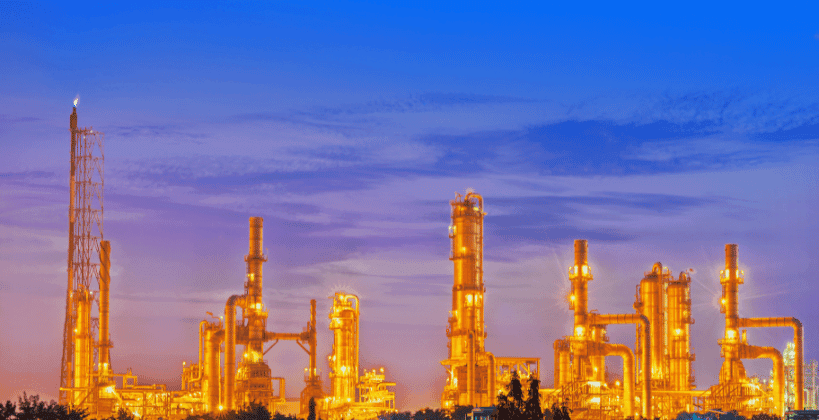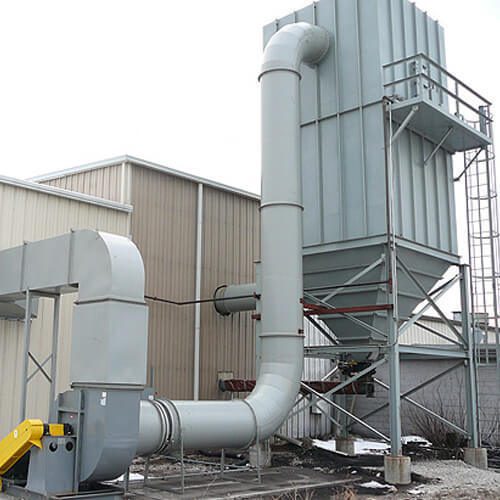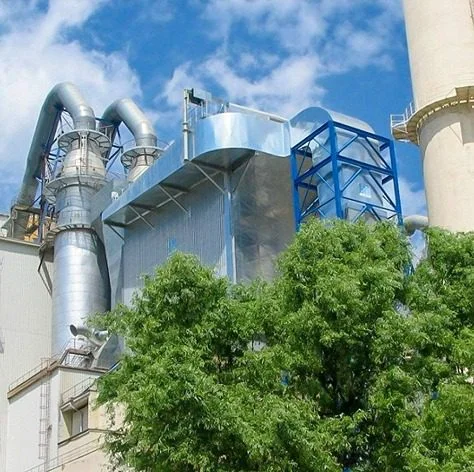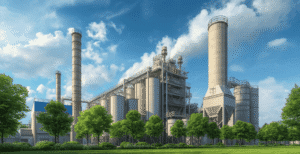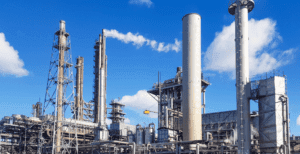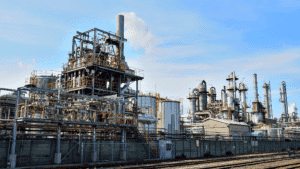Industrial environments generate significant amounts of dust, which, if not properly controlled, can lead to health risks, reduced equipment efficiency, and non-compliance with air quality regulations. Industrial dust removal system are essential for maintaining clean and safe workplaces, reducing airborne contaminants, and improving productivity. These systems are designed to capture, filter, and remove dust particles from manufacturing processes, ensuring optimal air quality in factories, power plants, food processing units, and other industrial facilities.
How Industrial Dust Removal System Works
Industrial dust removal systems operate through a series of mechanisms that efficiently capture, separate, and dispose of dust particles. The core components of these systems include dust collectors, filtration units, extraction hoods, and air purification technologies. The process begins with capturing dust at its source, transporting it through ducting systems, filtering it using specialized media, and then either recirculating clean air or safely disposing of the collected dust.
Dust removal systems vary depending on industry requirements and dust particle sizes. They use various filtration technologies, including mechanical separation, electrostatic precipitation, and high-efficiency particulate air (HEPA) filtration. These systems ensure compliance with workplace safety regulations and environmental standards while protecting workers from respiratory hazards caused by prolonged exposure to airborne dust.
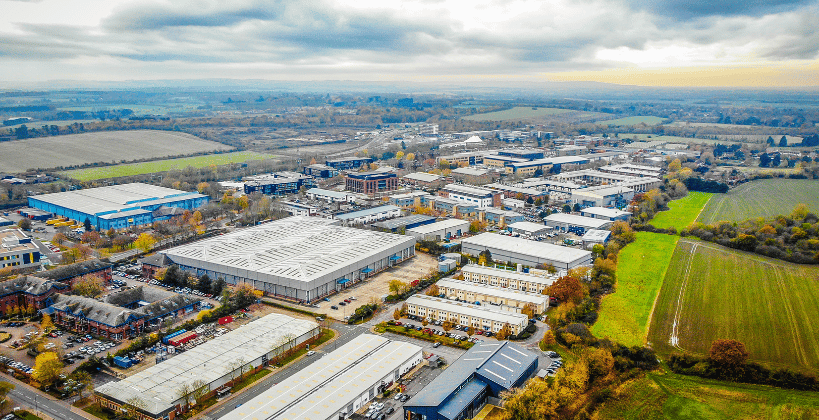
Types of Industrial Dust Removal System
Different industries require specialized dust removal solutions based on the type and volume of dust generated. Here are the most commonly used industrial dust removal systems:
- Baghouse Dust Collectors: These use fabric filter bags to trap and separate dust particles from air streams. They are commonly used in cement, metalworking, and chemical industries for high-volume dust collection.
- Cartridge Dust Collectors: Featuring pleated filter cartridges, these systems offer a compact and efficient dust removal solution. They are widely used in welding, powder coating, and pharmaceutical industries.
- Cyclone Separators: These pre-filters use centrifugal force to separate large dust particles before further filtration. They are ideal for sawmills, grain processing, and mining operations.
- Electrostatic Precipitators (ESP): Using an electrostatic charge, these systems capture fine dust particles in power plants and industrial furnaces, improving emission control.
- Wet Scrubbers: Designed for dust that contains combustible or hazardous materials, these systems use water or chemical solutions to neutralize and remove airborne contaminants.
- Portable Dust Collectors: These mobile units are used in localized workstations where dust extraction is needed on a smaller scale, such as woodworking shops and metal fabrication units.
Connect with us Now
Applications of Industrial Dust Removal Systems
Dust removal systems play a critical role in various industries where dust accumulation can affect operations, worker health, and product quality.
1. Manufacturing & Metal Processing
Industrial machining, grinding, and welding generate metallic dust that can cause respiratory issues and damage equipment. Dust removal systems help capture metal shavings, fumes, and airborne particulates.
2. Cement & Construction Industry
Cement production involves high levels of dust emissions. Baghouse filters and cyclone separators help in removing airborne cement dust to comply with air quality regulations.
3. Pharmaceutical & Food Processing
Powdered substances in pharmaceutical and food processing plants require strict dust control to prevent cross-contamination and maintain hygiene standards. Cartridge filters and HEPA systems are widely used in these industries.
4. Woodworking & Furniture Manufacturing
Sanding, sawing, and cutting wood produce large amounts of sawdust and fine particles. Cyclone separators and portable dust collectors help maintain clean air in woodworking environments.
5. Power Plants & Boilers
Coal-fired and biomass power plants produce fine particulate matter that must be filtered to reduce air pollution. Electrostatic precipitators and baghouse filters enhance air quality control.
6. Mining & Material Handling
Mining operations generate dust from drilling, blasting, and material transport. Wet scrubbers and cyclone separators help minimize airborne dust exposure for workers and equipment.
7. Automotive & Aerospace Industry
Paint booths, metal finishing, and composite material processing require effective dust extraction to ensure high-quality manufacturing and workplace safety.
Benefits of Industrial Dust Removal System
- Improved Air Quality: Reduces airborne contaminants, providing a safer and cleaner work environment.
- Compliance with Regulations: Meets OSHA (Occupational Safety and Health Administration) and environmental air quality standards.
- Enhanced Equipment Lifespan: Prevents dust buildup in machinery, reducing maintenance costs and increasing efficiency.
- Worker Safety & Health: Minimizes the risk of respiratory diseases caused by prolonged exposure to industrial dust.
- Increased Productivity: A dust-free workplace leads to improved efficiency and reduced downtime due to maintenance issues.
- Fire & Explosion Prevention: Removes combustible dust particles, lowering the risk of industrial fires and explosions.
Discover Our Range of Solutions:
How to Maintain an Industrial Dust Removal System
Proper maintenance is essential to ensure the efficiency and longevity of a dust removal system. Regular inspections and servicing prevent clogging, loss of suction power, and filter damage.
Key Maintenance Practices:
- Monitor Filter Condition: Replace or clean filters as per manufacturer recommendations to maintain optimal airflow.
- Inspect Ductwork & Seals: Ensure that ducts and seals are free from leaks to prevent loss of suction power.
- Check Fan & Motor Performance: Regularly assess fan efficiency and motor functionality to avoid operational failures.
- Empty Dust Collection Bins: Prevent overloading by emptying bins before they reach full capacity.
- Calibrate Sensors & Controllers: Ensure that system controls and monitoring sensors are functioning correctly.
- Perform Periodic System Audits: Conduct routine evaluations to optimize performance and detect potential issues early.
Choosing the Right Industrial Dust Removal System
Choosing the appropriate dust collection system is crucial and hinges on several key factors. These include the size of the dust particles, the volume of dust generated, specific industry requirements, and adherence to relevant compliance standards. A thorough assessment of these elements is necessary. Businesses should carefully consider the type of dust produced, as this dictates whether a dry or wet filtration system is most suitable. Equally important is determining the airflow requirements to ensure the system can effectively handle the necessary cubic feet per minute (CFM). Filter efficiency plays a vital role, with high-efficiency filters capturing more dust and minimizing emissions.
Beyond these technical considerations, practical constraints must also be addressed. The available space and installation limitations can influence the choice of system, with compact or modular designs often proving advantageous. Finally, energy consumption is a significant factor, both from an economic and environmental perspective. Selecting an energy-efficient model can lead to substantial reductions in operational costs and a smaller environmental footprint.
Why Choose Intensiv Filter Himenviro for Dust Removal Solutions?
Intensiv Filter Himenviro stands as a reliable provider of cutting-edge industrial dust removal systems. We specialize in crafting customized solutions tailored to the unique demands of diverse industries. Our dust collection systems are engineered with a focus on achieving optimal performance, maximizing energy efficiency, and ensuring long-term reliability for our clients.
Several key differentiators set Intensiv Filter Himenviro apart in the field of industrial dust collection. We employ high-performance filtration technology, utilizing state-of-the-art filter media to achieve superior dust control. Our approach emphasizes tailored solutions, meaning we custom-engineer dust removal systems to precisely match the requirements of various industrial applications. Furthermore, we prioritize energy efficiency, optimizing our solutions to minimize energy consumption while simultaneously maintaining high levels of filtration effectiveness.
Beyond these technical advantages, we also focus on the quality and support we provide. Our systems are built with robust materials, ensuring durability and an extended service life. Finally, our commitment to our customers extends to expert consultation and support. Our team of professionals offers comprehensive assistance in every stage, from selecting the right system to installation and ongoing maintenance.

Conclusion
Industrial dust removal systems are essential for maintaining a clean and safe working environment. They enhance air quality, protect workers from respiratory hazards, and ensure compliance with regulatory standards. Industries such as manufacturing, power plants, pharmaceuticals, and food processing rely on advanced dust collection technologies to optimize operations.
With Intensiv Filter Himenviro’s industry-leading dust removal solutions, businesses can achieve efficient dust control, improved workplace safety, and compliance with environmental regulations. Investing in the right dust removal system not only enhances productivity but also ensures long-term operational success.
